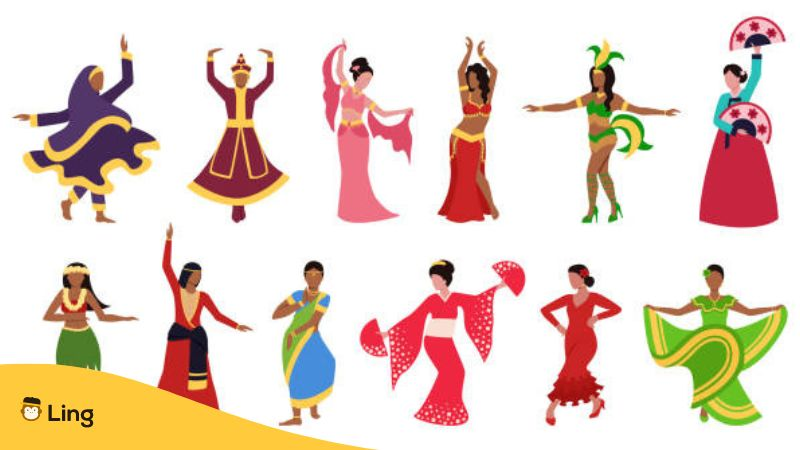Do you have a hard time understanding the language and culture relationship? We heard you! This is why this article will explore the dynamic bond between language and culture!
Imagine a dance party where language and culture boogie down like the coolest duo ever! They’re not just side by side; they’re twirling and shaping the way we all connect. Language is the dance floor, jam-packed with traditions, stories, and all the rad beliefs of a community. It’s more than words – it’s history and wisdom, letting everyone learn some old-school moves.
Culture? That’s the dazzling outfit, complete with unique styles, secret handshakes, and exclusive slang. It’s the spice that gives language that extra zing, adding words and phrases only the in-crowd gets.
Together, language and culture are the DJ and dance floor of human connections, making the party totally epic. Want to groove with this understanding? Hit the dance floor with us and explore more below!
Language And Culture Relationship
To better understand the differences between these two, let us first go over the meaning of language and culture below:
Language
Language is a unique communication method through speech, writing, and sign language. In other words, it helps us to communicate with people we care about and share our thoughts, feelings, and all the fascinating information we have. It also entails taking notes, using our hands to illustrate concepts, and speaking in different tones.
But did you realize that every country has its language? Despite having other words and sounds, they all work to make it simpler for us to understand and communicate with one another. So, if you talk to friends, write a story, or use your hands to show something, you use this wonderful instrument called language, which enables us to share and communicate.
Culture
Now, consider a group of friends with distinct personalities and ways of thinking. Some friends could have different cuisine, fashion, and cultural customs tastes. Together, these components make up their “culture.“
There are other additional ethnic groups and civilizations in the world. Members of such groups might share ideas and learn from one another when they get together. Therefore, it might be possible to design new items that blend traits from both cultures. Indeed, culture may be seen as a colorful tapestry that weaves together all the distinctive qualities that make people unique and affect how they interact with others.
The Evolution Of Language And Culture
Since the beginning of human history, both language and culture have coexisted. Early societies’ languages evolved into the foundation of each culture as they advanced. Different languages and cultures with various traits have emerged due to evolution. Cross-cultural exchanges and idea-sharing were made possible by the interaction of many cultures.
Cultural norms, values, and beliefs have a significant impact on language. By using colloquial terms, sayings, and particular terminology, it adjusts to convey the subtleties of a given culture. The proper use of language determines cultural standards, shaping communication styles and social mores.
One’s language fundamentally shapes identity. It acts as a vehicle for people to communicate their ideas, feelings, and experiences. Our chosen language can express our cultural origin and background, promoting community and belonging.

The Role Of Language In Shaping Culture
Language impacts how people think, see the world, and interact with one another. It is more than just a tool for communication. Various cultures create distinctive vocabularies that frequently cannot be translated into other languages. These subtle linguistic variations convey cultural ideas, convictions, and values, providing a window into the complex social fabric of a community.
Language As A Carrier of Tradition
Language helps societies transmit their histories, myths, and customs from generation to generation. To preserve cultural information over time, folktales, proverbs, and idioms capture the knowledge and experiences of the past. For instance, some languages’ names to particular cultural traditions emphasize how vital those acts are to that community.
Language And Identity
Cultural identity formation at the individual and group levels depends heavily on language. It symbolizes identification and a platform for people to share their cultural history. Some communities’ use of their native tongue to represent resistance against cultural assimilation strengthens their unity and national pride.

Cultural Influence On Language
Language affects culture, and culture likewise has an impact on language. The words and expressions that a culture’s language acquires give voice to that society’s everyday experiences, traditions, and social norms.
Lexicon Enrichment
Cultures frequently borrow words from other languages to describe novel ideas or events. These borrowings add to the language and show how interrelated cultures are. For instance, English has incorporated many words from other cultures, reflecting the multicultural makeup of contemporary life.
Cultural References And Expressions
Language is full of cultural allusions and idioms that represent the values and customs of a certain group. These idioms and colloquialisms have deeper connotations that non-native speakers might not appreciate entirely. They act as entry points into the culture that underlies the language.
Improve Language Learning With Ling
Are you tired of speaking the same language over and over again? Perhaps you want to improve your spoken language and learn foreign ones? Whether you are curious about diving into cultural learning and exploring a new language, Ling has your back! With games, puzzles, and quizzes to keep you occupied while you study, Ling is enjoyable and simple. Ready to give it a try? Get it right away from Google Play and the App Store!



































































